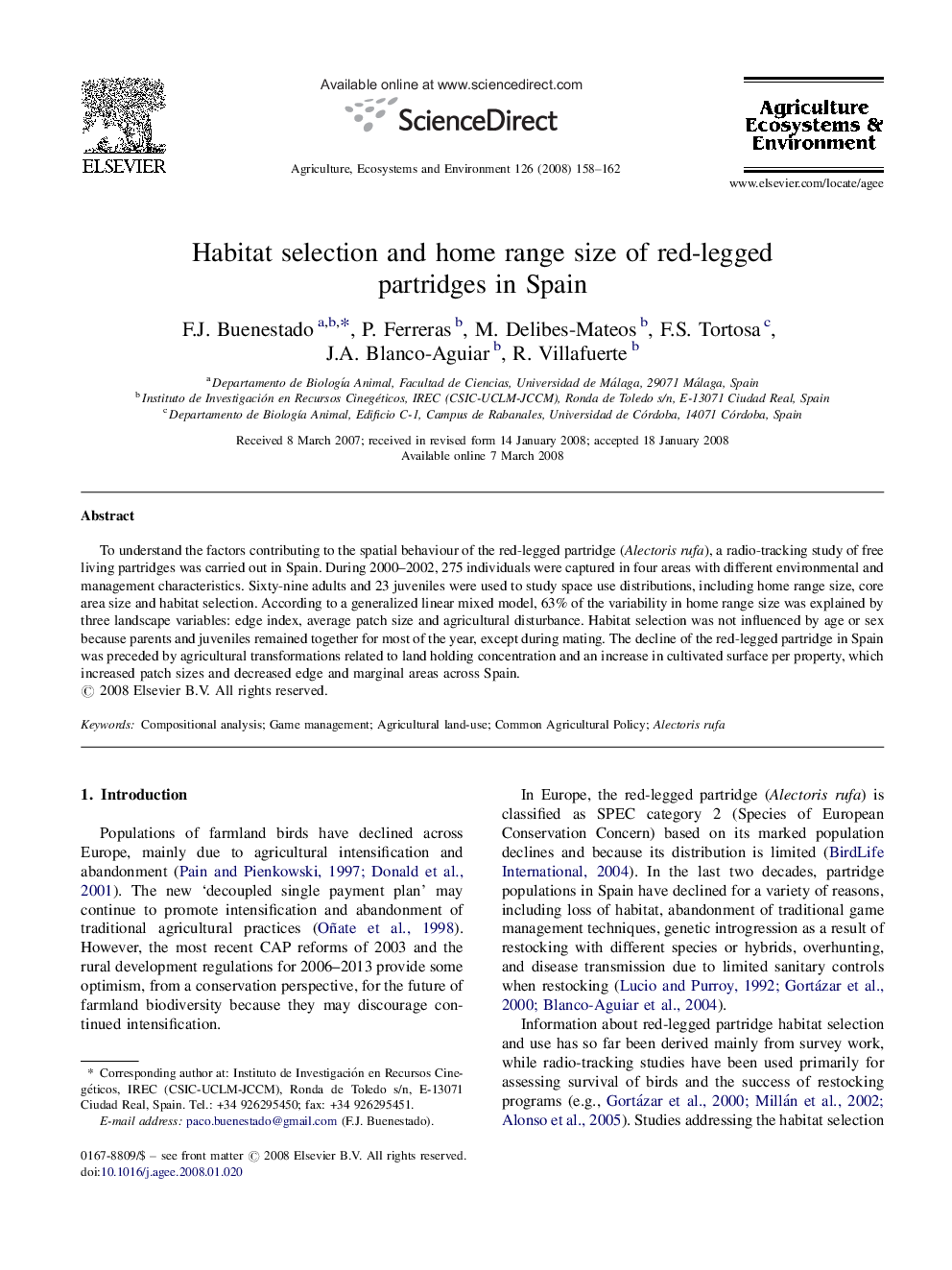| Article ID | Journal | Published Year | Pages | File Type |
|---|---|---|---|---|
| 2415509 | Agriculture, Ecosystems & Environment | 2008 | 5 Pages |
To understand the factors contributing to the spatial behaviour of the red-legged partridge (Alectoris rufa), a radio-tracking study of free living partridges was carried out in Spain. During 2000–2002, 275 individuals were captured in four areas with different environmental and management characteristics. Sixty-nine adults and 23 juveniles were used to study space use distributions, including home range size, core area size and habitat selection. According to a generalized linear mixed model, 63% of the variability in home range size was explained by three landscape variables: edge index, average patch size and agricultural disturbance. Habitat selection was not influenced by age or sex because parents and juveniles remained together for most of the year, except during mating. The decline of the red-legged partridge in Spain was preceded by agricultural transformations related to land holding concentration and an increase in cultivated surface per property, which increased patch sizes and decreased edge and marginal areas across Spain.
